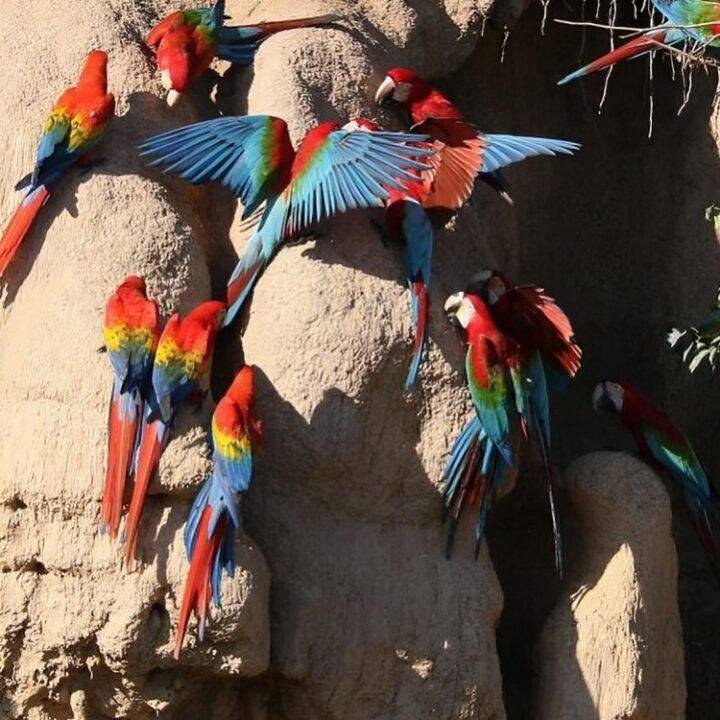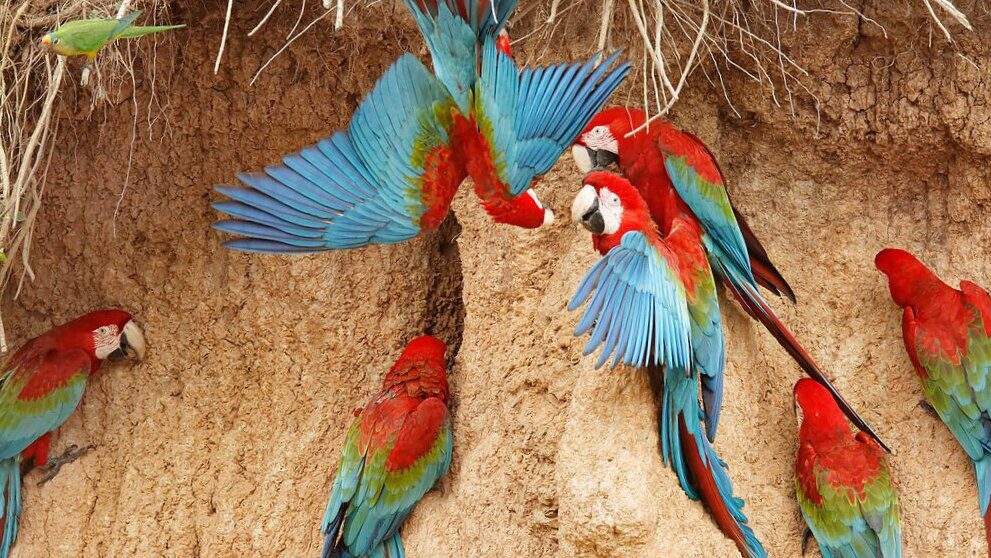In the heart of South America, especially in the Amazon rainforest, one of nature’s most stunning spectacles occurs almost daily—flocks of brightly colored macaws descend on exposed riverbanks and clay licks, pecking and chewing at the soil with surprising enthusiasm. At first glance, it may seem strange or even concerning. After all, why do macaws eat clay? Birds are generally known for eating fruits, seeds, and insects—but clay?
This fascinating behavior has captured the attention of scientists, birdwatchers, and nature enthusiasts alike. The answer, as it turns out, reveals a complex interplay between diet, environment, and survival. Macaws eat clay not just by accident, but as a crucial part of their natural lifestyle, and understanding why sheds light on the delicate ecological balance of the rainforest.
A Colorful Diet Comes with a Catch
Macaws, like many parrot species, are primarily frugivores—they feed on fruits, nuts, seeds, and berries. But not all fruits in the rainforest are harmless. In fact, many wild fruits contain toxins, alkaloids, or compounds that can be harmful if consumed in large quantities. Plants have evolved these natural defenses to deter animals from overconsuming them.

But macaws have a secret weapon: clay.
When macaws consume clay from riverbanks, they’re essentially self-medicating. Studies suggest that the clay binds to toxic substances in their diet and neutralizes them before they can be absorbed by the bird’s digestive system. In this way, clay eating—also called geophagy—acts as a natural detox.
The Science of Soil: Why Clay Matters
Not all soil is created equal. Macaws are highly selective about the clay they consume, often flying past several banks before settling on a specific lick. Research conducted in the Peruvian Amazon has shown that the clay favored by macaws is rich in sodium, an essential mineral that is often scarce in inland tropical environments.
Unlike coastal ecosystems where sea spray deposits salt, inland regions of the rainforest lack a natural sodium source. Clay licks serve as a critical mineral supplement, particularly for herbivorous and frugivorous animals. This is especially important for nesting females and chicks, who need extra nutrients to grow healthy feathers and strong bones.
So, why do macaws eat clay? It’s a combination of detoxification and mineral supplementation—essentially a powerful natural pharmacy available right in the wild.
A Social Affair
Interestingly, clay-eating isn’t just a survival tactic—it’s also a social activity. Macaws typically arrive at clay licks in the early morning in large, noisy groups. These gatherings are not only practical but also important for social bonding, mating, and communication.
Observers often see pairs grooming each other, engaging in playful behavior, and even performing what appear to be mating rituals. So while their main motivation may be nutritional, the communal aspect adds another layer of significance to this ritual.
Climate, Conservation, and Clay
Unfortunately, the very behavior that reveals so much about macaws also makes them vulnerable. As human activity encroaches on rainforest habitats—through logging, mining, agriculture, and dam construction—natural clay licks are being disturbed or destroyed. Because the specific composition of clay is so important to the birds, relocation isn’t always an option. They can’t just eat any dirt.
Conservationists are now working to protect known clay lick sites, sometimes even restricting human access to reduce stress on the birds. Eco-tourism, when managed responsibly, has become an important tool in raising awareness and generating funds for these efforts. Watching macaws eat clay is now a highlight of many Amazon tours.
What Macaws Teach Us About Nature
The question of “why do macaws eat clay” opens a window into the intricate ways animals adapt to their environment. It also reminds us that survival in the wild often depends on resources that may seem unusual or insignificant to us. A riverbank of muddy soil might look unremarkable, but to a macaw, it’s a treasure trove of life-sustaining minerals.
Moreover, their behavior demonstrates the concept of nutritional ecology, where animals actively seek out nutrients they can’t obtain from their regular diet. It also shows how closely tied animals are to the specific conditions of their habitats—a single mineral-rich bank can influence the health of entire generations of birds.
Final Thoughts
So, why do macaws eat clay? It’s not just a quirky or odd behavior—it’s a vital survival strategy shaped by evolution. From detoxifying harmful substances in their food to supplementing key minerals missing from their diet, macaws have found a remarkable way to thrive in the complex ecosystem of the rainforest.
Next time you see a picture of a vivid blue-and-yellow macaw perched at a clay lick, remember: it’s not just snacking on dirt. It’s partaking in a ritual that is as vital as it is ancient—a reminder of nature’s brilliance and the hidden wisdom of wild creatures.

